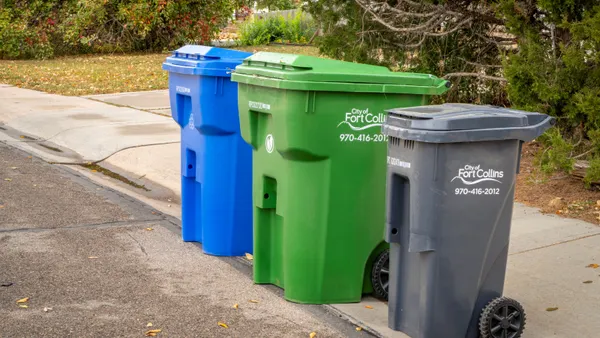Dive Brief:
- Santa Fe, NM will deliver new 64-gallon recycling carts to approximately 30,000 customers this month in an effort to replace smaller carts and boost recycling efforts citywide, as reported by Santa Fe New Mexican.
- The city will accept aluminum, paper and plastics in the carts, but will no longer accept glass in order to save on costs and eliminate safety hazards.
- In addition to the carts, the city has also invested in seven new automated collection trucks to replace trucks that required manual loading. This move will eliminate five temporary positions for manual lifters.
Dive Insight:
With these changes, Santa Fe is following a national trend of eliminating glass from curbside collections. Santa Fe Environmental Services Division Outreach Coordinator Adam Schlachter explained to the New Mexican that a 2015 contract with Friedman Recycling Co. has limited the city's ability to collect glass, however residents are still able to drop glass off at four sites across the city. A similar situation in Knoxville, TN is actually proving extremely successful, as drop-off centers have seen a 63% increase in volumes since Jan 1. Houston, Nashville, New Orleans and other cities have also adopted this trend.
Although glass has been eliminated from curbside collections, the city has expanded its recycling capacity in other ways since entering its contract with Friedman Recycling. In the summer of 2015, Santa Fe began accepting cereal boxes, egg and milk cartons, drink boxes and other miscellaneous items at the curb and at collection sites. These decisions have been made largely based on costs, with Schlachter noting that the city's top priority is to ensure "it doesn’t cost us any more to recycle than it would to build more capacity at the landfill."
The costs of seven new collection trucks will surely hit the city's budget hard, however the result of fewer employees on a payroll and reduced safety risks may be worth it. The trend of automated collections has also allowed for a new pool of driver applicants across the industry, and while there is a definite learning curve that comes with operating the automated trucks, they're proving to be increasingly popular in most regions across the country.









